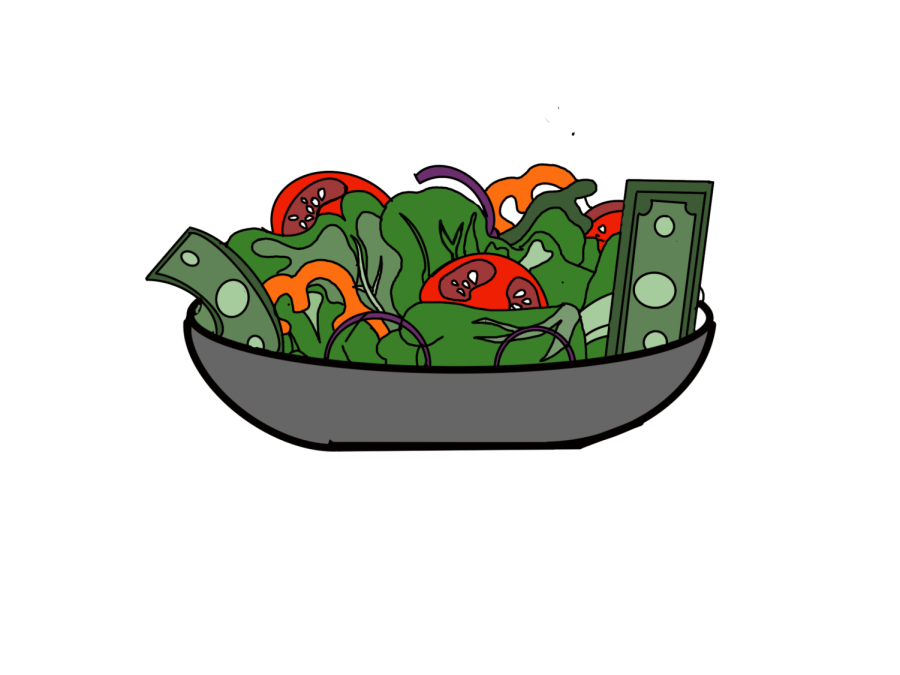Save green, eat green: Benefits of meatless diets
From BBQs and cookouts to broth and stew, the American diet is recognized for its staple inclusion of calorie-dense, protein-laden meats like chicken, pork and beef. Every year, an American will spend an average of $961 on meat on average, according to the United States Department of Agriculture. But, if one were not to buy meat, how much money would they save?
A common attribute of the vegetarian lifestyle is also being wealthy or trendy. The diet is associated with fad trends and upper-class grandeur, with wealth being the only way that such a diet is sustainable. However, according to the Vegetarian Resource Group, family households with incomes under 54k per year make up 58% of all vegetarians in America. The imaginary relation of wealth to a vegetarian diet denies the long-term health and financial benefits of a vegetarian lifestyle.
According to the Journal of Hunger & Environmental Nutrition, a vegetarian diet tends to save around $760 per year compared to the average American, who would be spending the difference on mainly beef, pork and chicken. This would be replacing these calorie dense animal-proteins with an assortment of legumes or nuts, which are much cheaper to produce and transport to the grocery store. Beyond this, there are also long-term health benefits to completely replacing meat in one’s diet. As of the past few years, heart disease is the leading cause of death for Americans. This is partially due to the overconsumption of meat, according to the American Heart Association. The high-fat and highly processed nature of red meats like beef or pork contributes to two of the three main underlying causes of cardiovascular disease, high blood pressure and high cholesterol. The absence of these meats in the vegetarian diet reduces overall healthcare expenses. The average vegetarian will have a 15% percent lower total medical expenditure compared to the average American’s healthcare costs of 13,000 per year, according to the Physicians Committee for Responsible Medicine. However, the vegetarian lifestyle does not instantly improve everything financially, as it requires more care and attention to maintain these diets than mainstream media suggests.
There is a ‘trap’ that is associated with the idea of replacement meats like Beyond Meat and Impossible Foods, which gives the general public the idea that becoming vegetarian is easy. Many were led to believe that replacing their meat consumption with lab-grown meats will allow them the best of both the meat-eating and vegetarian worlds. However, these replacement meats tend to be one and a half times more expensive than their naturally occurring counterparts, and three times as expensive as a vegetarian high-protein diet of legumes, nuts and eggs (which are vegetarian). These lab-grown meats, although something for reluctant meat-lovers to try, should never be seen as a true, financially-sound pathway into a vegetarian diet. Many will find themselves paying exorbitant prices to replicate a meat-like experience in their diets.
A healthy vegetarian diet optimized for financial cost would consist of high protein, but cheap plant matter like lentils or beans on a base of starchy carbohydrates like rice, pasta or potatoes. A generic meal plan like this would cost less than $8 a day; however, if one can afford the extra cost, there are more exciting but cheap meals like vegetable curries, stir-fries and soups. Using more varied spices and seasonings like red curry paste, coriander and chili, along with plant matter such as coconut, mushrooms and bell peppers, one can achieve complex flavors without having to sacrifice a fortune.
Having no meat in your diet, along with having a reasonable meal plan, saves you money both in the grocery store and the doctor’s office.












